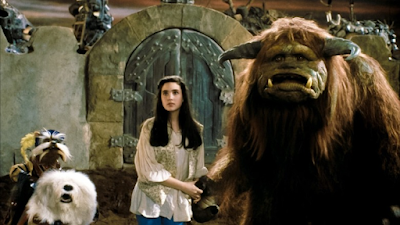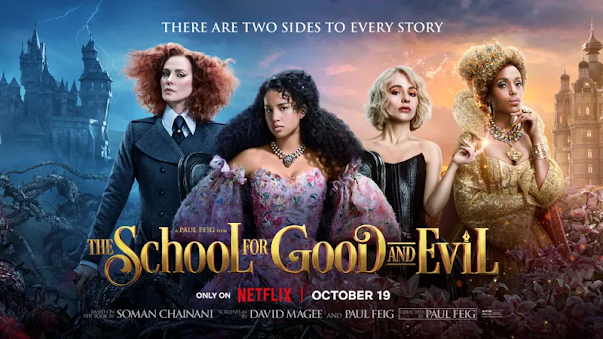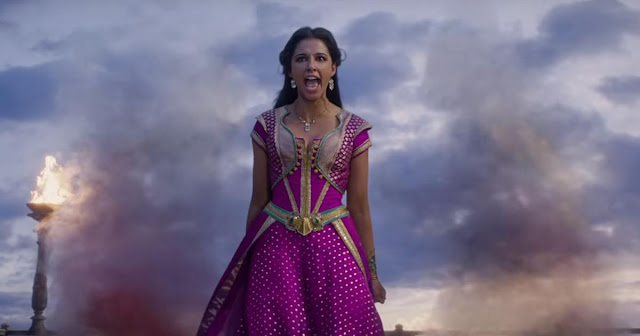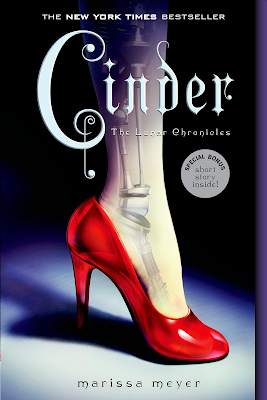Princesses and Puppets
The Labyrinth of Jareth Masquerade, one of the best princess events in existence, was inspired by the 1986 Jim Henson movie, Labyrinth. Though the protagonist Sarah is not a princess, the most iconic scene is when David Bowie's character brings her to a royal masquerade ball where her dress is transformed into a magnificent ballgown. Throughout the movie, Sarah interacts with puppet characters on her quest to recover her baby brother from the Goblin King's labyrinth. Jim Henson has always shown muppets interacting with humans, but it is not too common to see them in princess stories and even less common for princesses to be portrayed as puppets.
Jim Henson made a handful of fairy tale muppet specials with mixed results. The best by far is Tales from Muppetland: The Frog Prince from 1971 based on the classic fairy tale with a few fun twists. Melora is a beautiful human princess who is cursed to have her words twisted so her father can't understand her when speaks. The muppet interaction works well here because the other leading character is a frog, played by Kermit's nephew, Robin. The wicked Taminella who cursed both Melora and Robin is also a muppet, which prevents her from seeming too scary to kids. Melora's father is a muppet as well purely for comedic purposes. It makes little sense for a muppet to have a human daughter if you think about it too hard. The interactions with Kermit and Sweetums are brief, but make perfect sense with the story. Two years earlier, Jim Henson made another special called Hey Cinderella! which did not work as well due to the muppet characters only playing minor roles in the story. Cinderella, Prince Arthur, and the Fairy Godmother were all humans. Though the king was a comedic muppet, he did not have a large role, nor did Cinderella's stepfamily. Unlike The Frog Prince, Hey Cinderella! didn't work because it added nothing new to the famous tale.
In 1990, Jim Henson collaborated with Disney to create a live-action show based on The Little Mermaid in which Ariel would interact with puppet versions of her friends. The show was called "Little Mermaid's Island." It had some cringe-worthy songs and cheap special effects combined with thin stories. The two unreleased pilot episodes are available to watch on YouTube. Overall, the show was pretty cheesy and didn't add much to the original movie, which is why it got rejected in favor of the more story-driven animated series in 1992. Seven years later, Disney tried their hand again at having one of their most popular princesses interact with puppets in their 1997 series, Sing Me a Story with Belle.
I was never a huge fan of this show. I always thought it was kind of weird that Belle wore her traditional Victorian-era costume from the movie while interacting with children who wear modern-day clothes. Gaston was vastly simplified for the sake of maintaining the show's target audience. He was more of a comedic character and was far less threatening than in the 1991 movie. The puppets were used in a tongue-in-cheek fashion to accentuate the book aesthetic. There was a big talking book that would occasionally make snarky comments toward Belle, two small bookworms, and a talking cat that liked to curl up with the group for story time. The only thing that I think Sing Me a Story did well was incorporating old animated Disney shorts that many kids might never have otherwise seen with new songs.
There are virtually no movies or shows about princesses who are puppets, as Jim Henson seemed to prefer his princesses to be human. More than 15 years after his death, his successors created a muppet character for girls. Abby Cadabby is a "fairy-in-training" who moved to Sesame Street in 2006. Her design was definitely made with princess-loving girls in mind. She is pink and purple all over with a blue princess dress, wings, and a glittering wand. In 2009, she got her own CGI segment called Abby's Flying Fairy School. Abby may be the closest thing we ever get to a muppet princess. Human princesses interacting with muppets gives them the appearance of power, poise, and grandeur due to their size differences, which is probably why princesses are always human in stories about puppets. Since Abby is a little girl, she doesn't need to look grand or poised, and her small size would only make her cuter.
There are many ways for princesses to interact with their animal friends. Whenever Jim Henson was behind a production, he preferred those friends to puppets. Puppets create a unique aesthetic for fairy tale worlds. While they are not always the best way to tell a story, they can be refreshing for a change of pace. Though humans seem to be the universally preferred form for princesses, maybe one day we can look forward to seeing a princess muppet.
Jim Henson made a handful of fairy tale muppet specials with mixed results. The best by far is Tales from Muppetland: The Frog Prince from 1971 based on the classic fairy tale with a few fun twists. Melora is a beautiful human princess who is cursed to have her words twisted so her father can't understand her when speaks. The muppet interaction works well here because the other leading character is a frog, played by Kermit's nephew, Robin. The wicked Taminella who cursed both Melora and Robin is also a muppet, which prevents her from seeming too scary to kids. Melora's father is a muppet as well purely for comedic purposes. It makes little sense for a muppet to have a human daughter if you think about it too hard. The interactions with Kermit and Sweetums are brief, but make perfect sense with the story. Two years earlier, Jim Henson made another special called Hey Cinderella! which did not work as well due to the muppet characters only playing minor roles in the story. Cinderella, Prince Arthur, and the Fairy Godmother were all humans. Though the king was a comedic muppet, he did not have a large role, nor did Cinderella's stepfamily. Unlike The Frog Prince, Hey Cinderella! didn't work because it added nothing new to the famous tale.
In 1990, Jim Henson collaborated with Disney to create a live-action show based on The Little Mermaid in which Ariel would interact with puppet versions of her friends. The show was called "Little Mermaid's Island." It had some cringe-worthy songs and cheap special effects combined with thin stories. The two unreleased pilot episodes are available to watch on YouTube. Overall, the show was pretty cheesy and didn't add much to the original movie, which is why it got rejected in favor of the more story-driven animated series in 1992. Seven years later, Disney tried their hand again at having one of their most popular princesses interact with puppets in their 1997 series, Sing Me a Story with Belle.
I was never a huge fan of this show. I always thought it was kind of weird that Belle wore her traditional Victorian-era costume from the movie while interacting with children who wear modern-day clothes. Gaston was vastly simplified for the sake of maintaining the show's target audience. He was more of a comedic character and was far less threatening than in the 1991 movie. The puppets were used in a tongue-in-cheek fashion to accentuate the book aesthetic. There was a big talking book that would occasionally make snarky comments toward Belle, two small bookworms, and a talking cat that liked to curl up with the group for story time. The only thing that I think Sing Me a Story did well was incorporating old animated Disney shorts that many kids might never have otherwise seen with new songs.
There are virtually no movies or shows about princesses who are puppets, as Jim Henson seemed to prefer his princesses to be human. More than 15 years after his death, his successors created a muppet character for girls. Abby Cadabby is a "fairy-in-training" who moved to Sesame Street in 2006. Her design was definitely made with princess-loving girls in mind. She is pink and purple all over with a blue princess dress, wings, and a glittering wand. In 2009, she got her own CGI segment called Abby's Flying Fairy School. Abby may be the closest thing we ever get to a muppet princess. Human princesses interacting with muppets gives them the appearance of power, poise, and grandeur due to their size differences, which is probably why princesses are always human in stories about puppets. Since Abby is a little girl, she doesn't need to look grand or poised, and her small size would only make her cuter.













Comments